- Esenciales
- Empezando
- Datadog
- Sitio web de Datadog
- DevSecOps
- Serverless para Lambda AWS
- Agent
- Integraciones
- Contenedores
- Dashboards
- Monitores
- Logs
- Rastreo de APM
- Generador de perfiles
- Etiquetas (tags)
- API
- Catálogo de servicios
- Session Replay
- Continuous Testing
- Monitorización Synthetic
- Gestión de incidencias
- Monitorización de bases de datos
- Cloud Security Management
- Cloud SIEM
- Application Security Management
- Workflow Automation
- CI Visibility
- Test Visibility
- Intelligent Test Runner
- Análisis de código
- Centro de aprendizaje
- Compatibilidad
- Glosario
- Atributos estándar
- Guías
- Agent
- Uso básico del Agent
- Arquitectura
- IoT
- Plataformas compatibles
- Recopilación de logs
- Configuración
- Configuración remota
- Automatización de flotas
- Solucionar problemas
- Detección de nombres de host en contenedores
- Modo de depuración
- Flare del Agent
- Estado del check del Agent
- Problemas de NTP
- Problemas de permisos
- Problemas de integraciones
- Problemas del sitio
- Problemas de Autodiscovery
- Problemas de contenedores de Windows
- Configuración del tiempo de ejecución del Agent
- Consumo elevado de memoria o CPU
- Guías
- Seguridad de datos
- Integraciones
- OpenTelemetry
- Desarrolladores
- Autorización
- DogStatsD
- Checks personalizados
- Integraciones
- Crear una integración basada en el Agent
- Crear una integración API
- Crear un pipeline de logs
- Referencia de activos de integración
- Crear una oferta de mercado
- Crear un cuadro
- Crear un dashboard de integración
- Crear un monitor recomendado
- Crear una regla de detección Cloud SIEM
- OAuth para integraciones
- Instalar la herramienta de desarrollo de integraciones del Agente
- Checks de servicio
- Complementos de IDE
- Comunidad
- Guías
- Administrator's Guide
- API
- Aplicación móvil de Datadog
- CoScreen
- Cloudcraft
- En la aplicación
- Dashboards
- Notebooks
- Editor DDSQL
- Hojas
- Monitores y alertas
- Infraestructura
- Métricas
- Watchdog
- Bits AI
- Catálogo de servicios
- Catálogo de APIs
- Error Tracking
- Gestión de servicios
- Objetivos de nivel de servicio (SLOs)
- Gestión de incidentes
- De guardia
- Gestión de eventos
- Gestión de casos
- Workflow Automation
- App Builder
- Infraestructura
- Universal Service Monitoring
- Contenedores
- Serverless
- Monitorización de red
- Coste de la nube
- Rendimiento de las aplicaciones
- APM
- Términos y conceptos de APM
- Instrumentación de aplicación
- Recopilación de métricas de APM
- Configuración de pipelines de trazas
- Correlacionar trazas (traces) y otros datos de telemetría
- Trace Explorer
- Observabilidad del servicio
- Instrumentación dinámica
- Error Tracking
- Seguridad de los datos
- Guías
- Solucionar problemas
- Continuous Profiler
- Database Monitoring
- Gastos generales de integración del Agent
- Arquitecturas de configuración
- Configuración de Postgres
- Configuración de MySQL
- Configuración de SQL Server
- Configuración de Oracle
- Configuración de MongoDB
- Conexión de DBM y trazas
- Datos recopilados
- Explorar hosts de bases de datos
- Explorar métricas de consultas
- Explorar ejemplos de consulta
- Solucionar problemas
- Guías
- Data Streams Monitoring
- Data Jobs Monitoring
- Experiencia digital
- Real User Monitoring
- Monitorización del navegador
- Configuración
- Configuración avanzada
- Datos recopilados
- Monitorización del rendimiento de páginas
- Monitorización de signos vitales de rendimiento
- Monitorización del rendimiento de recursos
- Recopilación de errores del navegador
- Rastrear las acciones de los usuarios
- Señales de frustración
- Error Tracking
- Solucionar problemas
- Monitorización de móviles y TV
- Plataforma
- Session Replay
- Exploración de datos de RUM
- Feature Flag Tracking
- Error Tracking
- Guías
- Seguridad de los datos
- Monitorización del navegador
- Análisis de productos
- Pruebas y monitorización de Synthetics
- Continuous Testing
- Entrega de software
- CI Visibility
- CD Visibility
- Test Visibility
- Configuración
- Tests en contenedores
- Búsqueda y gestión
- Explorador
- Monitores
- Flujos de trabajo de desarrolladores
- Cobertura de código
- Instrumentar tests de navegador con RUM
- Instrumentar tests de Swift con RUM
- Detección temprana de defectos
- Reintentos automáticos de tests
- Correlacionar logs y tests
- Guías
- Solucionar problemas
- Intelligent Test Runner
- Code Analysis
- Quality Gates
- Métricas de DORA
- Seguridad
- Información general de seguridad
- Cloud SIEM
- Cloud Security Management
- Application Security Management
- Observabilidad de la IA
- Log Management
- Observability Pipelines
- Gestión de logs
- Administración
- Gestión de cuentas
- Seguridad de los datos
- Sensitive Data Scanner
- Ayuda
Datadog UI Extensions
This page is not yet available in Spanish. We are working on its translation.
If you have any questions or feedback about our current translation project, feel free to reach out to us!
If you have any questions or feedback about our current translation project, feel free to reach out to us!
What is a UI Extension?
UI Extensions enable developers to extend the native functionality of Datadog through custom dashboard widgets. For example, if there is a data visualization you want that Datadog does not support, or a common remediation workflow you execute in a third-party platform, you could write a UI Extension to extend this functionality within Datadog.
Setup
Set up your local development environment
Create a Datadog app for your UI Extension:
yarn create @datadog/appNavigate to the folder you have created:
cd starter-kitSet up your development environment:
yarn start
This starts your local development server on http://localhost:3000/.
If you see the following message, your application is running:
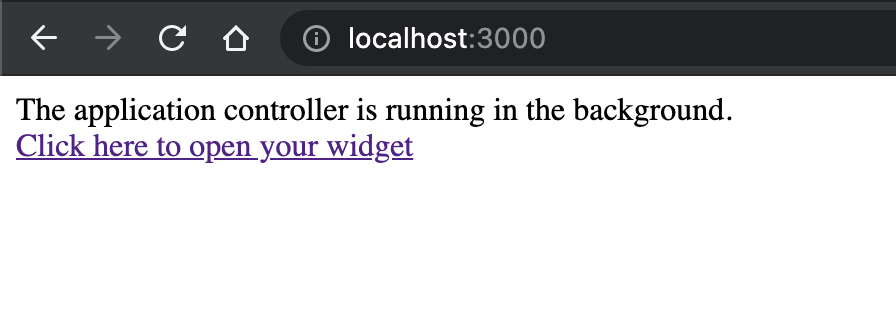
Note that there are two pages:
http://localhost:3000: A main controller that orchestrates all of your different extensions (such as widgets, menus, or modals). It will come in handy as you enrich app functionality.http://localhost:3000/widget: Components for widgets, modals, or anything that needs a dedicated display.
See the Developer Platform Developer Guide for details about this architecture.
You may notice an uncaught HandshakeTimeoutError in your JavaScript Console when you interact with the local widget in your browser directly. This is expected. The Datadog Apps SDK is designed to run in an iframe that connects to the Datadog User Interface and the handshake attempt between the widget and the Datadog UI will timeout when there is no Datadog UI for the SDK has to communicate with.
Add your app to the Developer Platform
Navigate to Integrations > Developer Platform and click + New App.
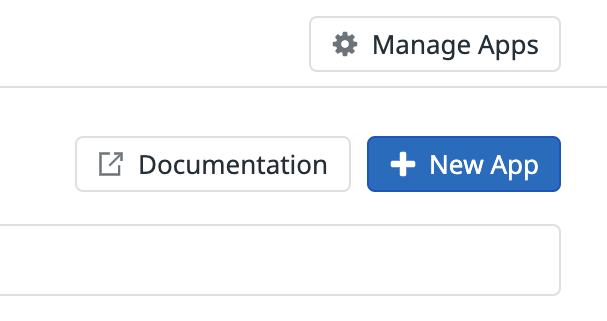
Enter a unique name for your application.
Optionally, once you’re presented with the dashboard for your new application, you can change the app name, give the app a more detailed description, or change its icon.
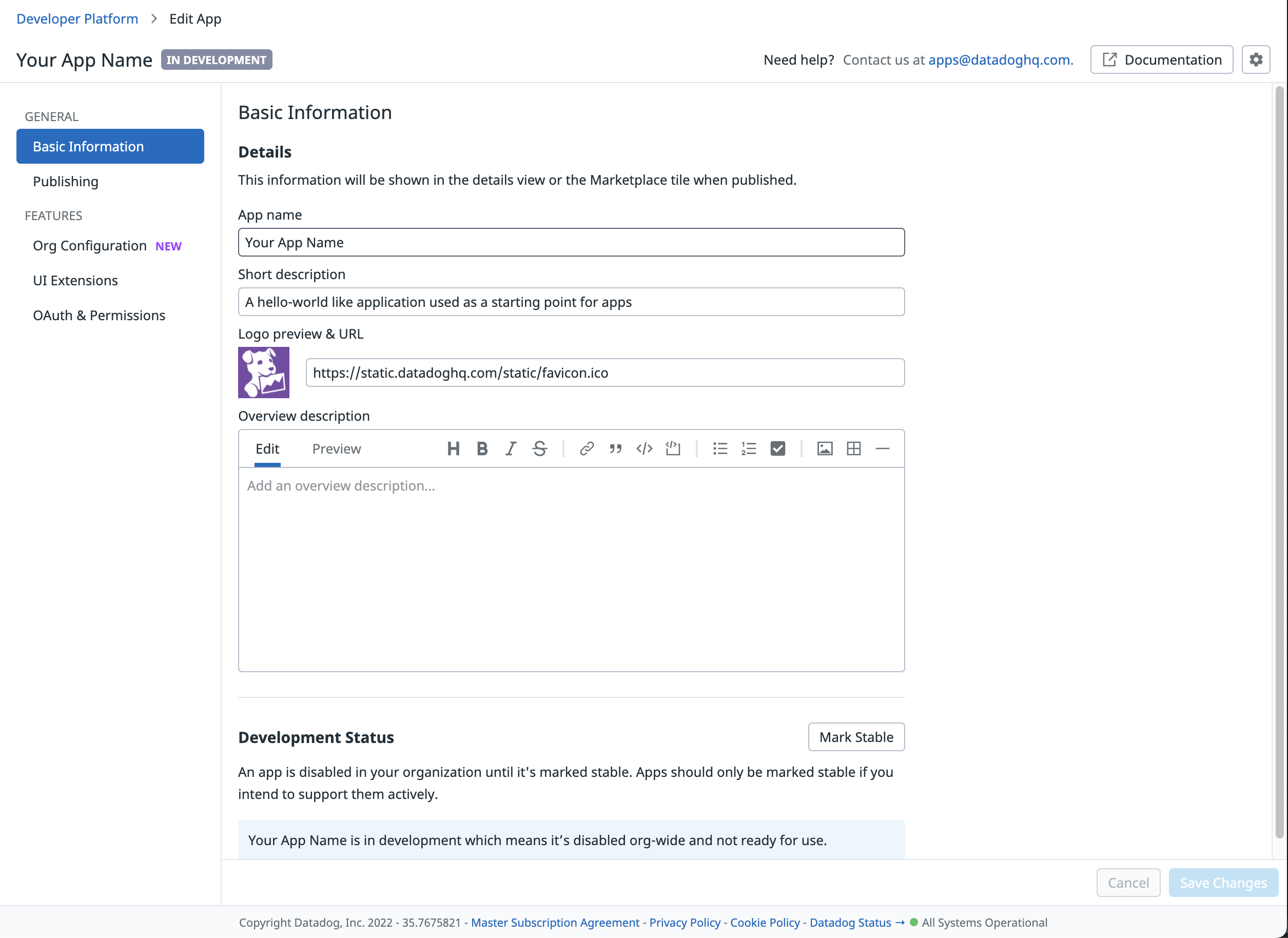
Add your app to a dashboard
Before you can add your app to a dashboard, you must enable it by clicking on UI Extensions.

Once this view loads, click on the Enable UI Extensions button.
Once you’re presented with more options for your app, change the Root URL and Debug Mode Root URL to match the
localhostversion of the widget you’re running. The main controller path is/widget. These URL values will change as you build your application and begin to host it on your own infrastructure.Turn the toggle to Dashboard Custom Widget on. This generates JSON for the app.
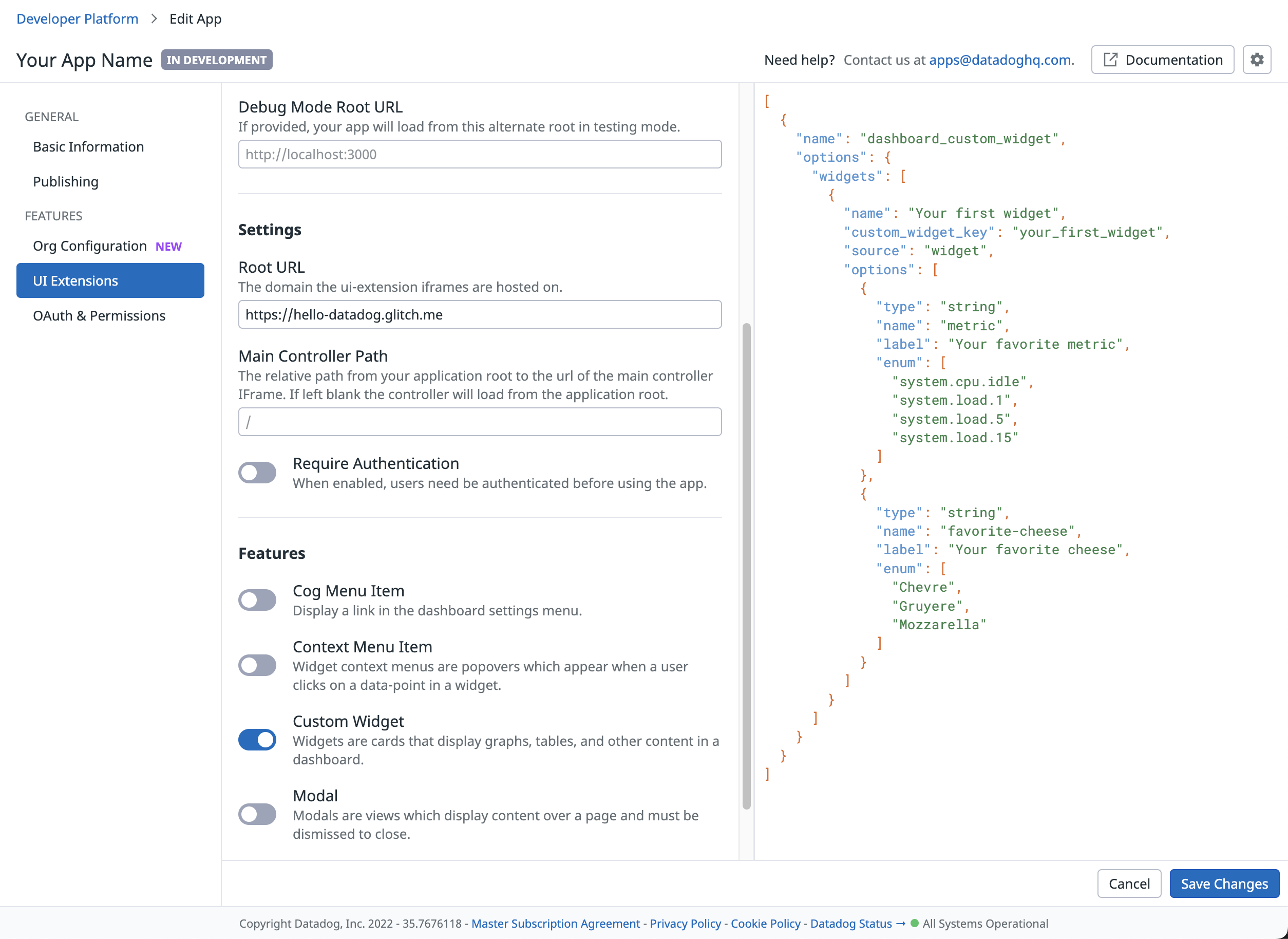
In this example, the JSON output contains a value called
Your first widget. This is the name of your widget as it appears in the menu to add to your Dashboards.Navigate to your dashboard and add a widget.
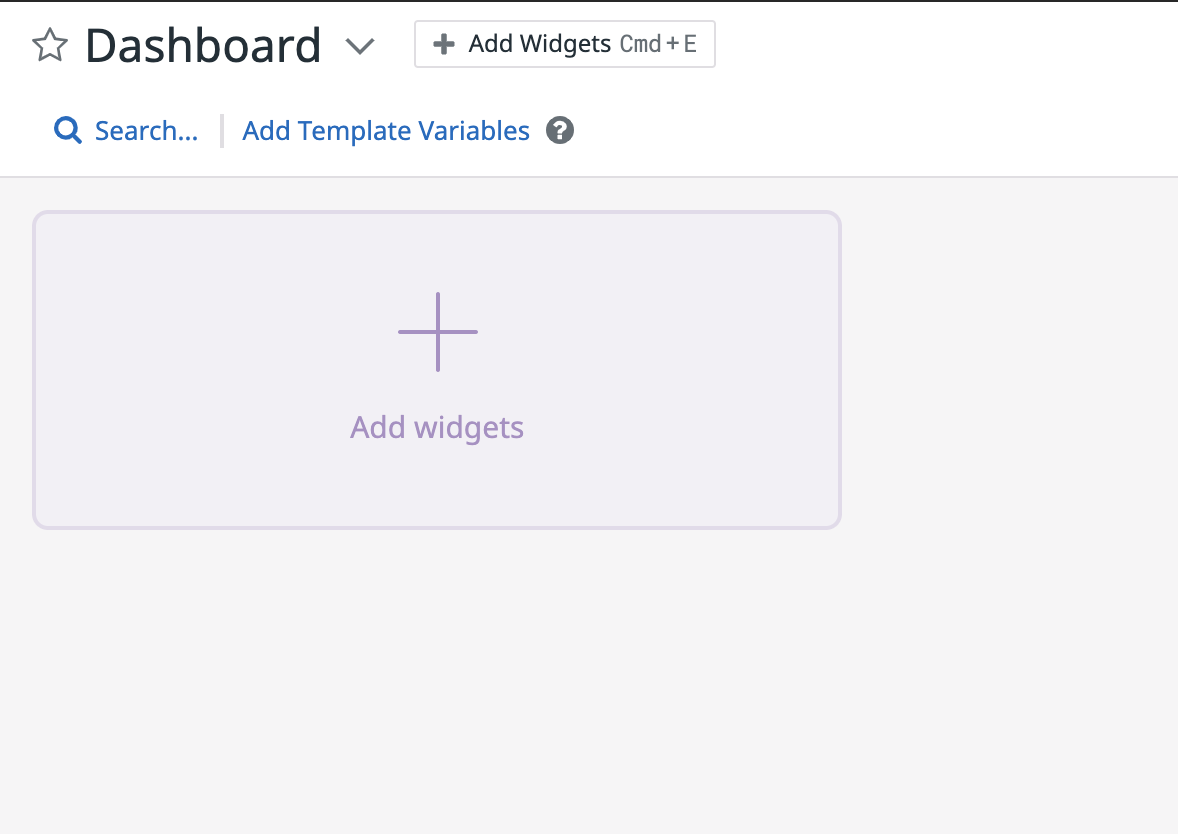
The Custom Widgets section is at the bottom of the sidebar. Find your widget in the list and add it to your dashboard.
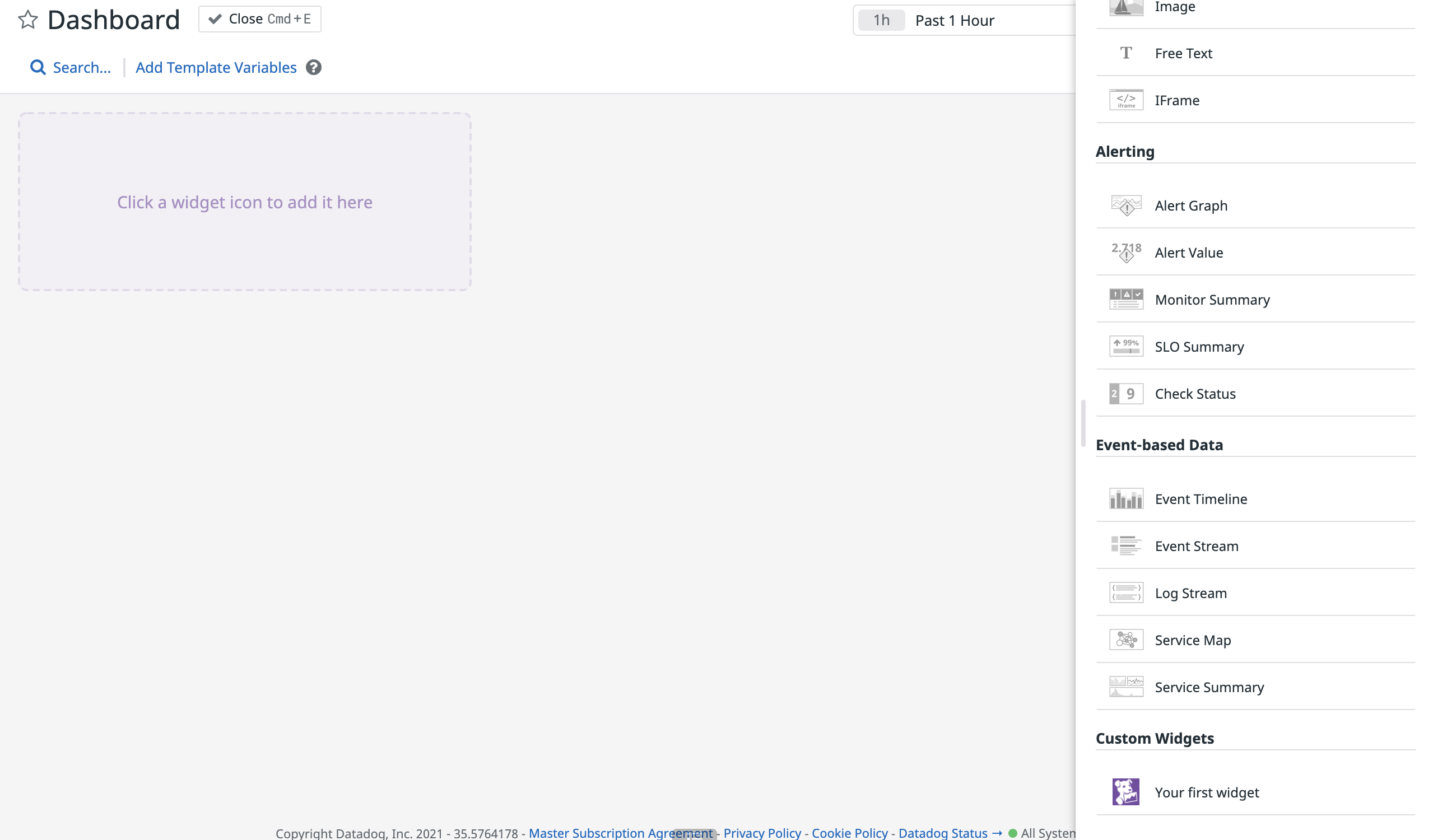
A preview of your new widget appears, along with some options. Scroll down and click Done to add it to your dashboard.
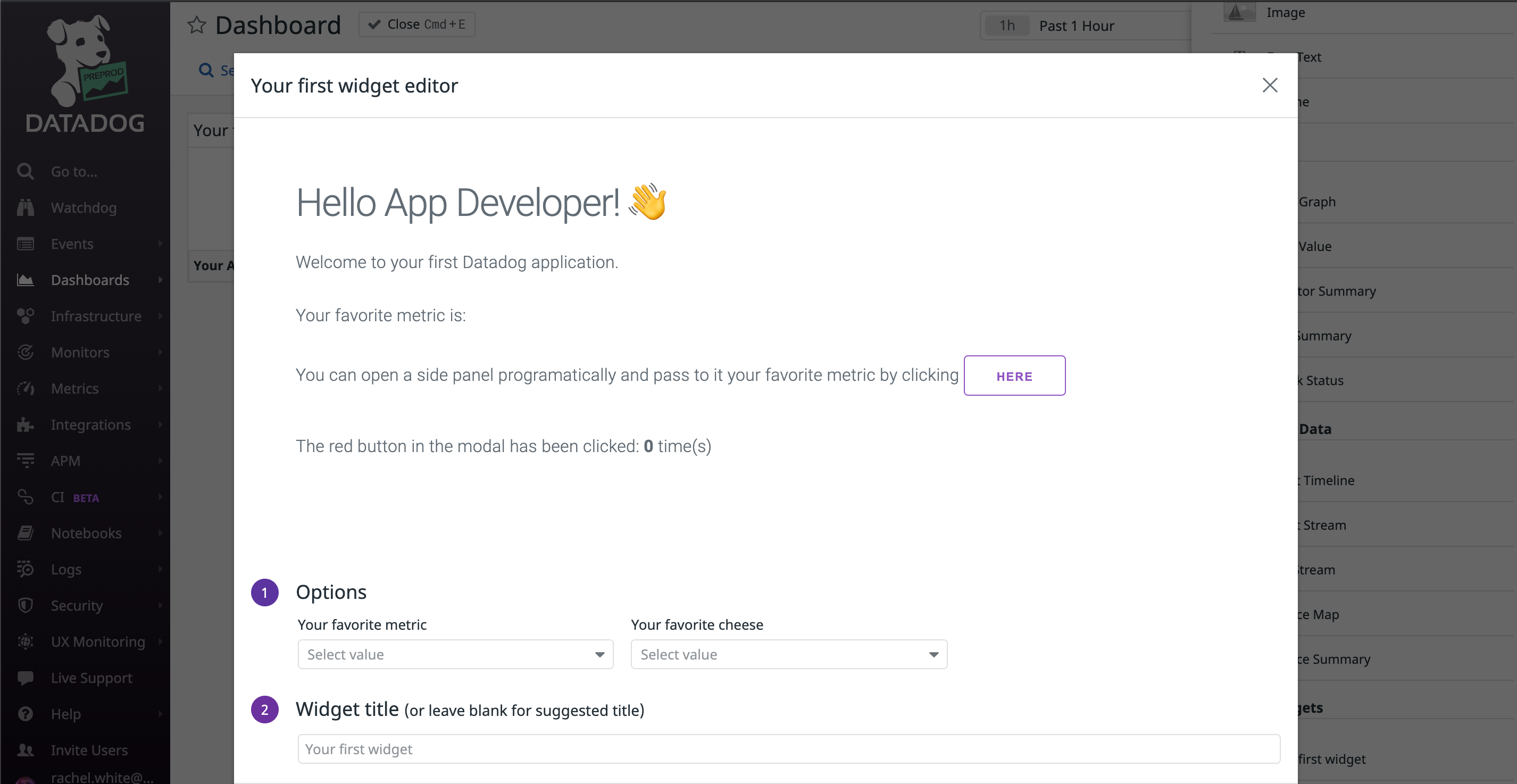
To build your application, run
yarn buildin your terminal. Then, move your static generated site to the hosting platform of your choice and update the URLs in the app settings.
OAuth API Access
When OAuth API Access is enabled, users need to be authenticated before using the app. This feature allows you to integrate your existing authentication mechanism (for example, cookie-based username and password login) with the Developer Platform.
